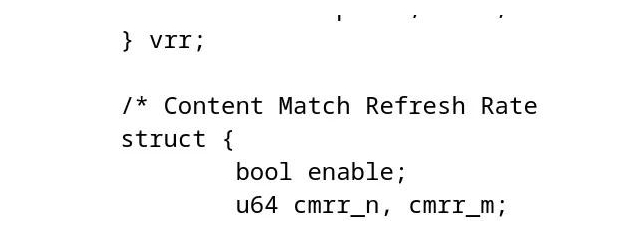Intel submits Linux GPU driver updates to introduce CMRR adaptive refresh rate feature for Lunar Lake processors
The open source Linux graphics driver code has selected CMRR as an Intel display version 20 feature. Display version 20 is suitable for Lunar Lake Xe2 collective display. However, this CMRR function may also appear in other hardware, such as the next generation standalone display.
However, these drivers have not yet been officially announced, and we can only speculate from the comments in the update itself. From a naming perspective, CMRR should be a display technology similar to AMD FreeSync and Nvidia G-Sync.
Intel's Linux graphics card driver patch briefly describes CMRR as:
CMRR is a display feature that uses an adaptive synchronization framework to slightly change the Vtotal to match the content rate without frame loss. This feature is a variant of VRR that uses an adaptive synchronization framework to slightly change the Vtotal (between additional 0 to 1 Vtotal scan lines) to accurately match the content rate without frame loss
At present, the specific details of this feature are not clear. Vtotal seems to refer to Vertical Total, a term related to display technology. CMRR may be designed to reduce screen flicker without affecting frame rate.
If nothing unexpected, Lunar Lake will be released in the second half of 2024, and Linux's stable updates to various applications and drivers indicate that the development of Lunar Lake is progressing smoothly. IT Home will continue to pay attention to it in the future. Stay tuned.
(Extract from IT Home)


